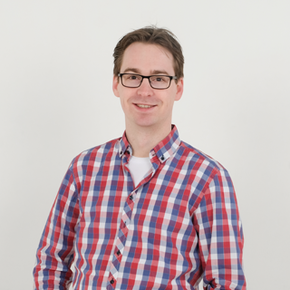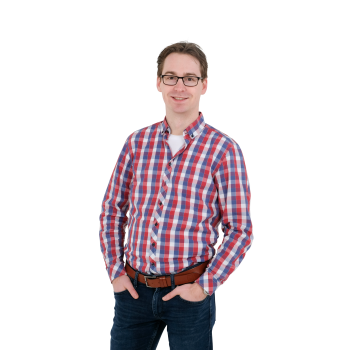CB had already purchased its new fully automated sorting system. However, even before its implementation, concerns arose about whether the machine had enough capacity. Since the machine itself couldn’t be fundamentally changed, CB had to adapt its processes—but what would work? Together with CQM, CB developed a simulation to answer both current and future questions.

It’s remarkable—you invest millions in a machine, only to realize it might not be able to handle peak volumes. This happened to CB (Centraal Boekhuis), a 150-year-old company based in Culemborg that distributes books to bookstores and consumers in the Netherlands and Belgium. CB also provides logistics and platform solutions for the healthcare sector.
For years, CB sorted boxes of books using a standard groupage sorter, which was due for replacement. “The previous management decided to purchase the new ‘B2B Sorter’ at the time,” says Linda van Zomeren, CEO of CB since three years. “They made this decision carefully, but without data models that could predict the machine’s impact on our business processes.”
Significant concerns
The new sorting system was ordered in 2022 and, after a two-year construction period, was scheduled to go live on April 10, 2024. “But as we prepared for implementation, concerns about the machine’s capacity grew,” says Van Zomeren.
The new sorter is a so-called buffer sorter, where boxes are temporarily stored in a large buffer before being automatically stacked on a pallet according to specific grouping rules and then sealed. “We had serious doubts about whether the buffer was large enough to complete this process on time each day. And time is crucial for us, as we no longer handle transport ourselves but work with external carriers who leave precisely at 1:00 AM,” she explains.
A professional simulation
At the time, Erik de Vries, then Team Lead Data at CB, made these concerns even more tangible. Using a simple self-developed simulation, he demonstrated that the worries were indeed justified: “But we had limited experience with simulation models, and the stakes were high. So, we wanted to involve an experienced partner.”
In early 2024, the CQM team - consisting of Jannet van Zante, Minou Voortman, and Bart Post - got to work. Bart Post and Erik de Vries transformed the existing model into a new, professional simulation. "We designed the mathematical model and software structure to easily calculate different scenarios. This allowed us to predict the effects of various measures CB could take in its business processes to use the new buffer sorter more efficiently," explains Post.
Measure 6a
CB had now fully committed to adapting its processes to the machine. Van Zomeren: “We had no other choice. The old sorter could break down at any moment, and we needed to have the new system operational well before our busiest months from September to December. So, the April 10, 2024, deadline remained firm.” Using the new simulation, CB tested various measures for their effectiveness. “One of the most important interventions was ‘Measure 6a’,” says De Vries. This measure involved removing boxes from the buffer earlier, even if the pallet for a specific customer was not yet complete. These pallets remained unsealed and were set aside on the floor. Additional boxes for these incomplete pallets were added manually later. "Measure 6a ensured that boxes left the buffer sooner, preventing it from filling up and causing congestion in the supply flow. The measure was so successful that it became a well-known concept within our company," De Vries explains.
Other measures
The expandable simulation model allowed improvement ideas to be systematically tested and their results reviewed by CB’s experts. Besides Measure 6a, CB implemented several other optimizations:
- Sorting boxes in advance by postal code, so more boxes from the same region arrived together, leading to more complete pallets and freeing up buffer space.
- Introducing cutoff times, based on the sorter’s maximum speed of 1,200 boxes per hour. If 3,000 boxes remained in the buffer late at night, they needed to start unloading at least 2.5 hours in advance to meet the 1:00 AM transport deadline.
- Optimizing unloading strategies, calculated using the simulation model. For example, frequently ordered evening shipments remained in the buffer, while less time-sensitive pallets were prepared earlier to reduce manual interventions.
"One major advantage of the simulation model is that it can predict what CB should expect each day," says Post. CB also implemented a control model to track progress in real-time throughout the day, ensuring they stayed on schedule or could take corrective actions. "During the project, my colleague Minou helped align the simulation model with this real-time control system," Post adds.
(Text continues below the image)

L-R: Linda van Zomeren, Bart Post and Erik de Vries.
New projects
The new B2B Sorter at CB successfully went live on April 10, 2024. "I’m incredibly proud of the CB/CQM team for achieving such great results within the given constraints," says Van Zomeren. "It was a fantastic team effort." However, due to IT issues unrelated to the simulation, CB faced four months of delivery challenges, impacting customers. "But that was outside the scope of this project. The new sorting system, combined with our process optimizations, now works well. We’ve adapted to the limited buffer capacity, and the system has significantly improved ergonomics and energy efficiency."
Looking ahead, CB has already started two new optimization projects. Van Zomeren explains: “The measures we took during the go-live phase were temporary solutions to work with the new installation. Now it’s time to replace these with long-term solutions.” For example: Manual stacking in Measure 6a was never intended for an ergonomic system and needs an automated alternative. A new Operations Research Team—including Erik de Vries—has been set up to develop simulations for other installations and processes at CB. "Thanks to our collaboration with CQM, we learned that if we want to make significant operational changes or investments, we need a data-driven approach. This ensures that when we make a decision, we already know what to expect," she adds.
Testing before going live
"For any organization investing in a new machine, it is essential to thoroughly analyze its impact," says Bart Post. "The investment is too significant, and the stakes are too high to leave it to chance or gut feelings. A simulation allows you to ‘test’ the system before going live."
Want to optimize your business with data-driven insights?
Whether it’s sorting, planning, or simulation - CQM helps you move forward. Get in touch to discover what simulation can do for your organization!
Curious about other use cases? Read how we used simulation for ASML to predict the impact of transitioning to a new warehouse.



